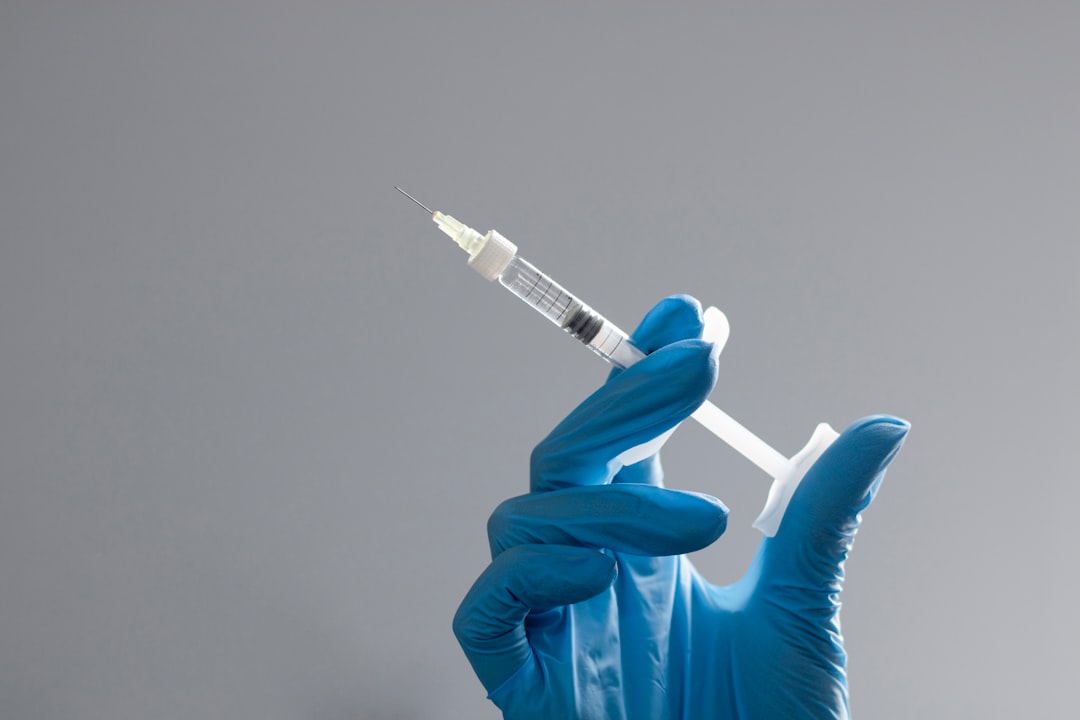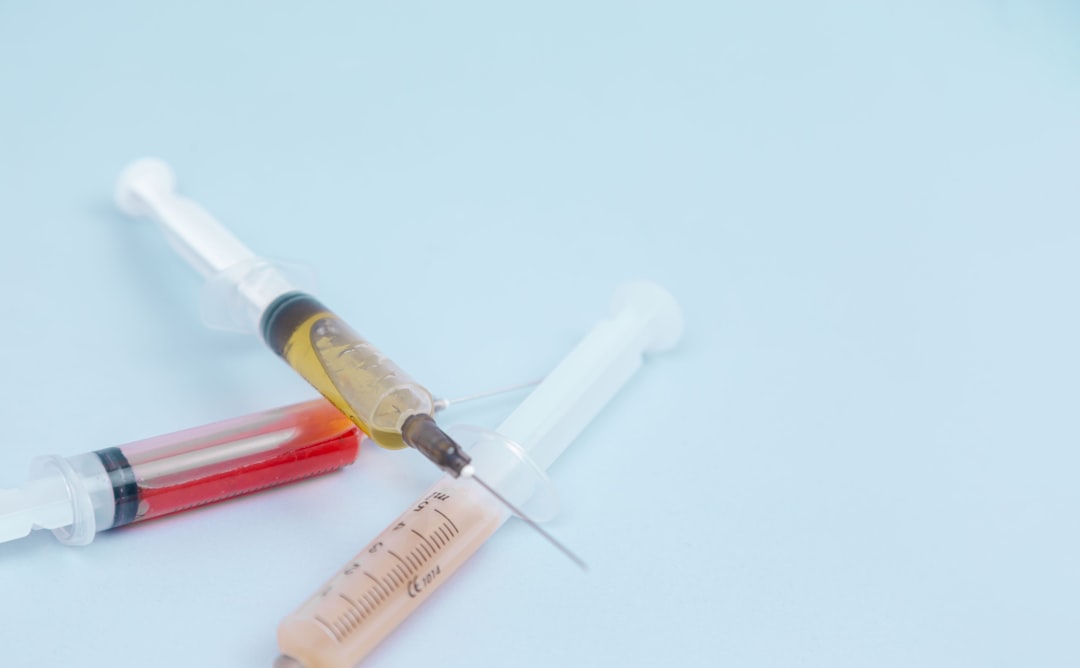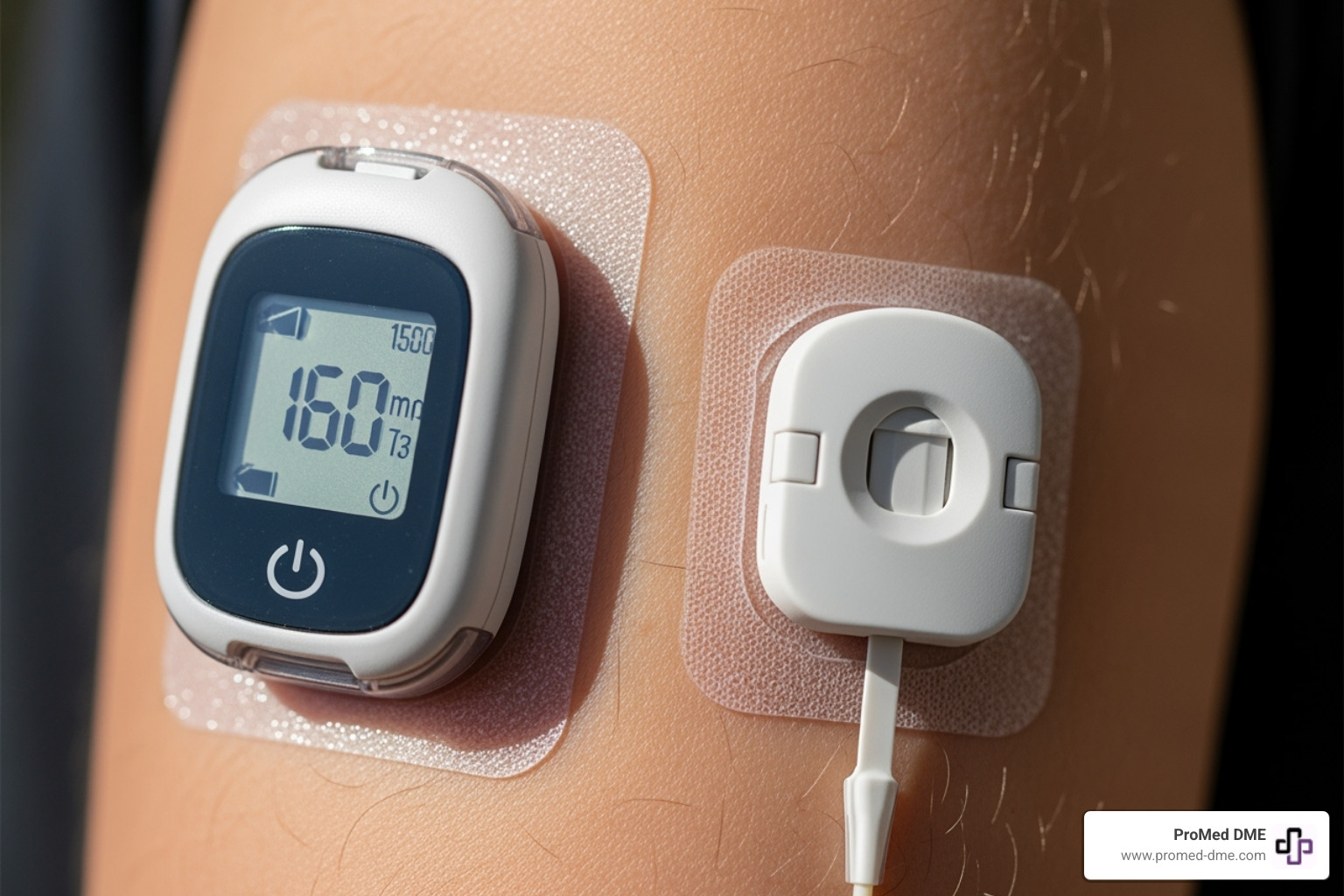How to Get Your Hands on a CGM Without Losing Your Mind
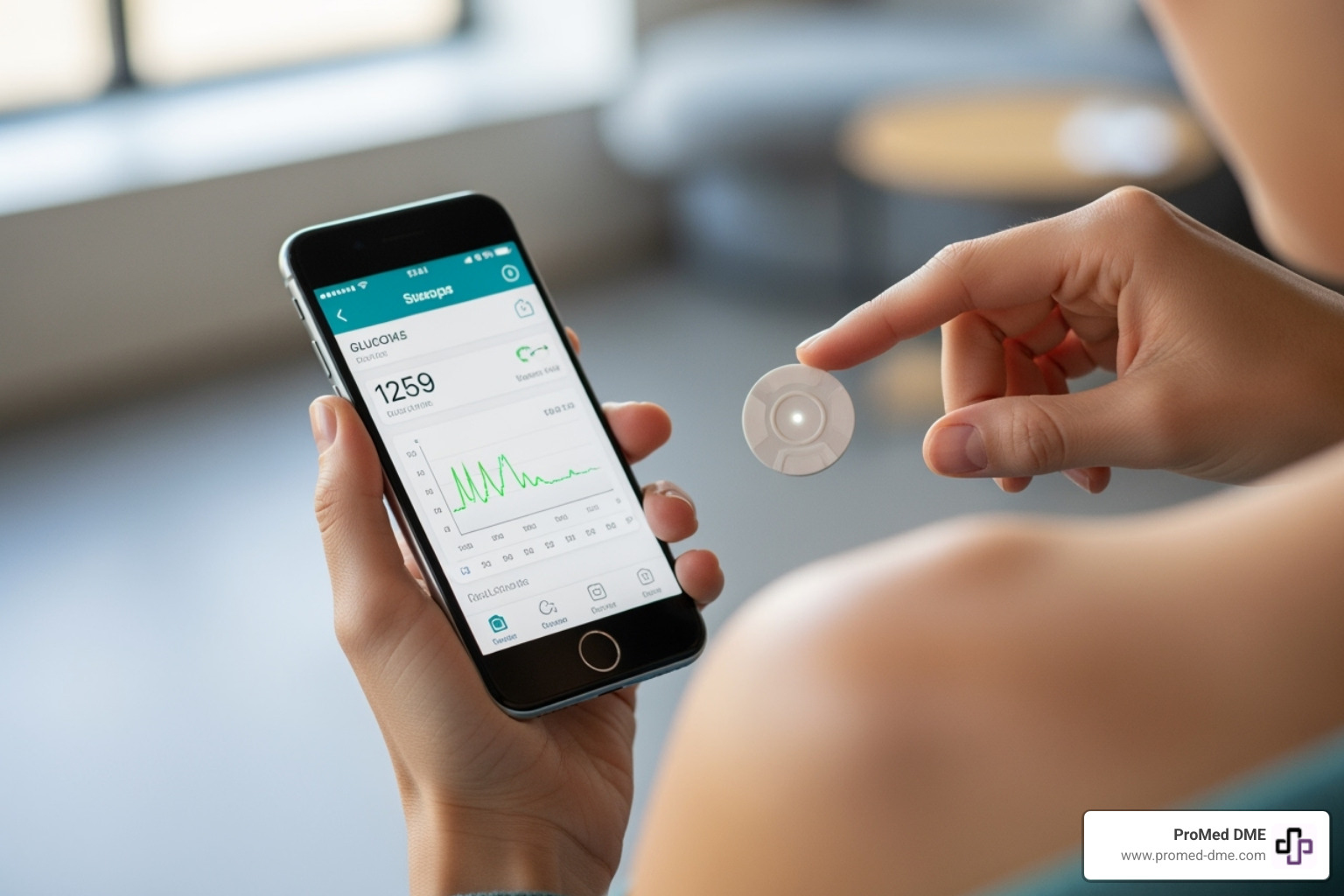
Your Guide to Getting a Continuous Glucose Monitor
Where can I get CGM? For many people with diabetes, getting a Continuous Glucose Monitor (CGM) can feel overwhelming. You want the best tools to manage your health, but navigating prescriptions, insurance, and suppliers is tricky. You might worry about high costs, paperwork, or finding reliable support.
Getting a CGM doesn't have to be a headache. We're here to simplify the process so you can focus on your health. We'll guide you, step-by-step, through getting a CGM.
To quickly answer your question:
- Consult your doctor for a prescription.
- Verify your insurance coverage.
- Choose a trusted medical supplier, like ProMed DME, to provide your CGM.
A CGM offers a complete picture of your glucose levels, far beyond what traditional fingerstick tests provide. It's a game-changer for managing diabetes with less pain and more insight.
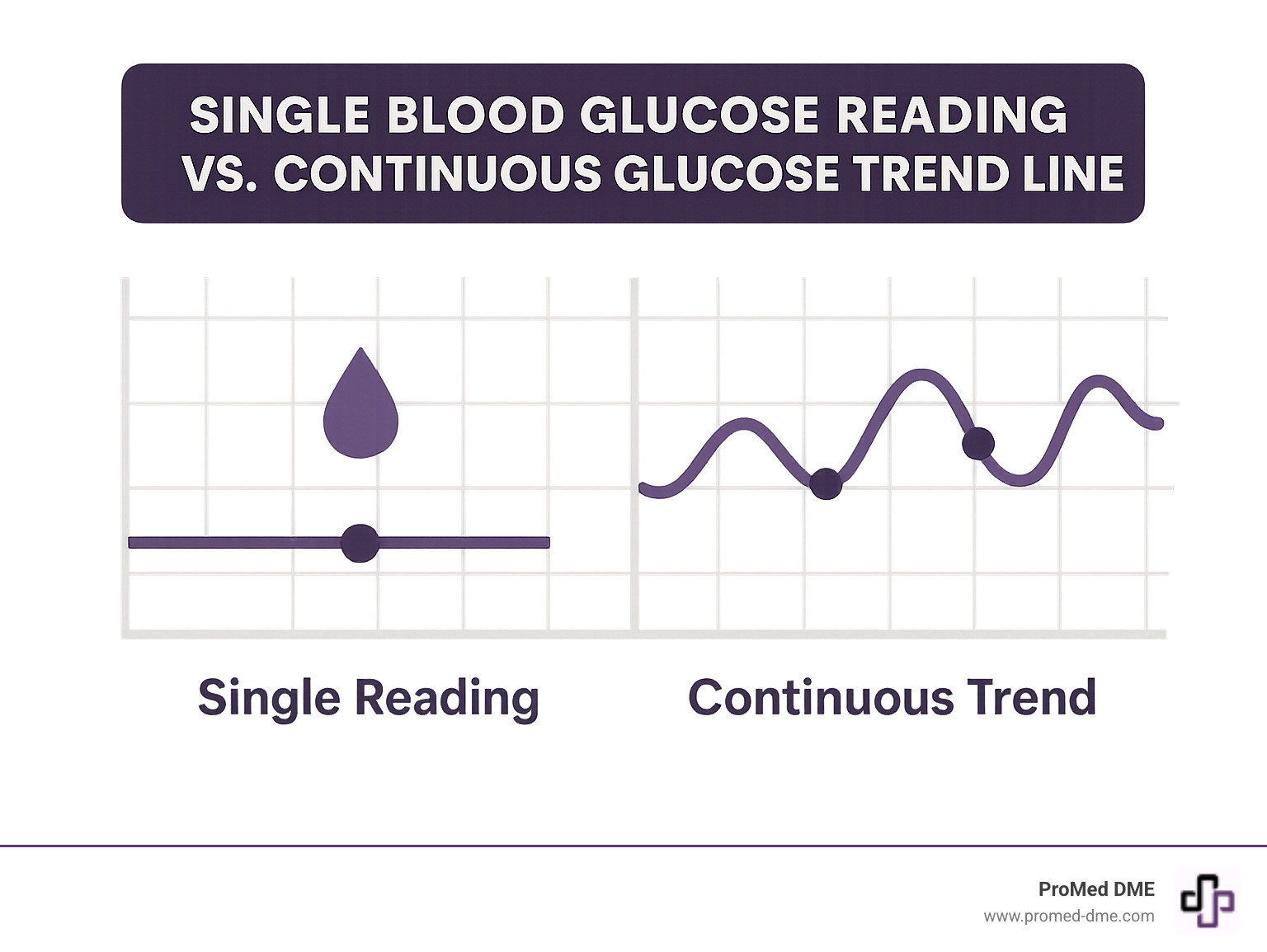
Where can I get CGM terms to remember:
What is a CGM and Why is it a Game-Changer?
A Continuous Glucose Monitor (CGM) is like a personal health detective that works around the clock, constantly monitoring your blood sugar. It provides insights that traditional fingerstick tests simply can't match.
Where can I get CGM technology that makes diabetes management easier? The answer starts with understanding what makes this device so special.
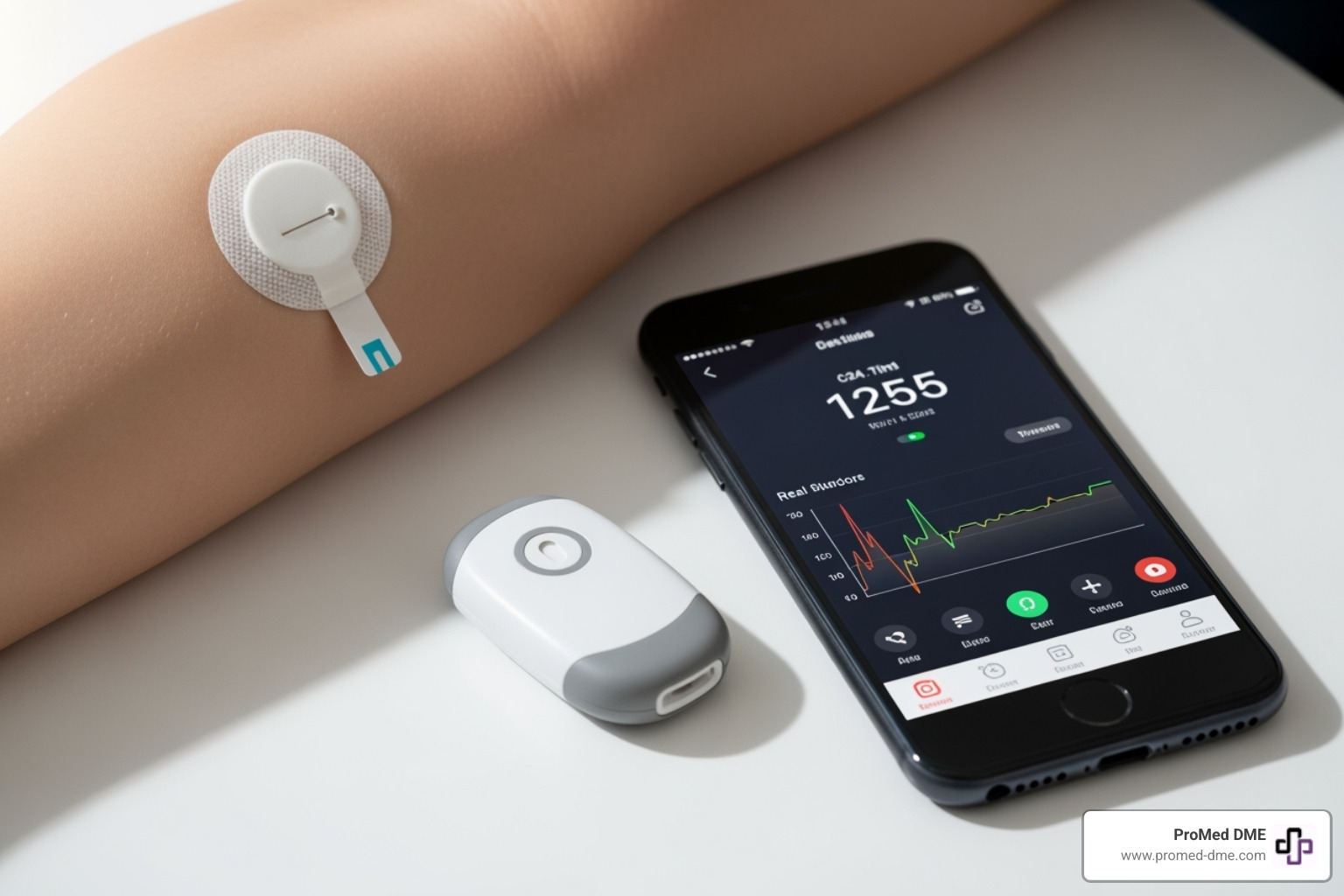
A CGM system has three simple parts. The sensor is a tiny, hair-thin wire that sits just under your skin, usually on your arm or belly. Inserting it is surprisingly painless. This sensor reads glucose levels in your interstitial fluid, the liquid surrounding your cells.
The transmitter takes those readings and sends them wirelessly to your phone or a special receiver. Most people use their smartphone, which makes checking your levels as easy as glancing at a text. You get a fresh reading every few minutes, creating a continuous stream of data instead of a single number from a fingerstick.
This allows you to see your glucose trends in real-time. Instead of wondering if your levels are rising or falling, you get helpful arrows showing your direction. This insight helps you stay in your target range—what doctors call Time in Range (TIR)—much more easily.
And the best part: fewer fingersticks. While you might still need an occasional fingerstick for calibration or to double-check a reading, those daily pricks become mostly a thing of the past. You also get high and low alerts that can wake you up at night or notify you during busy days when dangerous levels might otherwise go unnoticed.
CGM vs. Traditional Blood Glucose Meters
Traditional blood glucose meters are like trying to understand a conversation by hearing just one word. You prick your finger, get one number, and then you're flying blind until the next test. That snapshot data tells you where you were, not where you're going.
Those painful fingerpricks multiple times a day are not just uncomfortable—they're also incomplete. You might test at 120 mg/dL and think you're doing great, but you could be shooting up to 200 or dropping toward 60 without knowing it.
CGM flips this from reactive to proactive management. Instead of treating problems after they happen, you can prevent them. Those trend arrows are like a weather forecast for your blood sugar. Seeing a rapid rise after lunch? You can take action. Notice a steady drop during your evening walk? You can grab a snack before you hit a dangerous low.
Studies show that people using CGM see A1C improvement compared to those relying only on traditional meters. It's not magic—it's having better information to make better decisions. This is what makes continuous glucose monitoring for diabetes such a breakthrough.
The Real-World Benefits of Continuous Monitoring
The real magic happens in daily life. Improved glycemic control means you're not just managing your condition—you're mastering it. When you can see exactly how your body responds to different foods, activities, and stresses, you become the expert on your own diabetes.
Reduced hypoglycemia is a key safety benefit. Those scary low blood sugar episodes, especially at night, become less frightening when a device can wake you before things get dangerous.
The lifestyle insights might surprise you most. Ever wonder why your blood sugar spikes after your morning coffee, even without sugar? Or why a 10-minute walk after dinner makes a difference? CGM shows you the food impact and exercise effect in real-time, turning every meal and activity into a learning opportunity.
Perhaps most valuable is the peace of mind that comes with continuous monitoring. No more wondering, "What's my blood sugar right now?" or worrying about overnight lows. You have a reliable guardian watching over you 24/7.
This combination of benefits, accessibility, and how it works makes CGM technology one of the most empowering tools available for diabetes management today. It's about living with confidence and freedom.
Where Can I Get a CGM? Your 4-Step Action Plan
Getting a CGM might seem like a daunting task, but we've broken it down into four simple steps so you can find your way to better health and peace of mind.

Let's walk through each step together, making sure you know exactly what to do to get this life-changing technology.
Step 1: Talk to Your Doctor
Your journey to a CGM begins with a conversation with your healthcare provider. This is a crucial first step because you will almost always need a prescription.
Who to talk to: While an endocrinologist is a diabetes specialist, your primary care provider can also write a CGM prescription. They can review your current diabetes management and help determine if a CGM is the right tool for you.
Medical Necessity: For insurance, it all comes down to "medical necessity." Historically, CGMs were mostly for people with Type 1 diabetes. The good news is that coverage is expanding for individuals with Type 2 diabetes, especially if you use insulin, have a history of hypoglycemia, or need better glucose control. Your doctor will need to document your specific situation to show this medical necessity.
Discussing Your Needs: Be open with your doctor about your challenges. Do you worry about overnight lows? Are you curious how certain foods affect you? Do you want to stop pricking your fingers so often? The more you share, the better they can support you. This isn't just about getting a device; it's about gaining a powerful tool to manage your diabetes with more precision.
Step 2: Steer Your Insurance Coverage
Once you have a prescription, the next step is navigating insurance. CGMs are usually considered "Durable Medical Equipment" (DME).
Prior Authorization (PA): Most major insurers, including Medicare, require a prior authorization (PA) before they'll cover a CGM. A PA is a formal request from your doctor to your insurance company, showing the CGM is medically necessary. Your doctor's office typically handles this paperwork. Here at ProMed DME, we can also help you figure out if your insurance covers a CGM and help get the paperwork started.
Formulary and Deductibles: It's smart to check your insurance plan's formulary, which is their list of covered equipment. This will show which CGM brands your plan might prefer. Also, keep in mind your deductible and out-of-pocket maximums, as you may need to pay a certain amount before your insurance fully kicks in.
Medicare Coverage: The rules for Medicare have improved significantly. Many popular CGM systems are now approved for Medicare coverage. However, Medicare will typically only pay for the sensors if you also use a Medicare-covered receiver, so it's important to confirm this detail.
What if my PA is denied?: Don't give up. If your PA is denied, you have the right to appeal. Your doctor can often have a "peer-to-peer review" with the insurance company's medical director to explain why the CGM is essential. Persistence often pays off.
For more detailed information on insurance coverage, visit our guide on CGM covered by insurance.
Step 3: Where can I get CGM supplies? Choosing Your Provider
You have your prescription and insurance approval. Now, the big question: Where can I get CGM supplies? This is where you choose your partner in managing your diabetes supplies.
Local Pharmacy vs. DME Supplier: Some CGM models might be available at your local pharmacy. However, many devices, especially those needing separate transmitters, must be ordered from a specialized medical device supplier, also known as a DME supplier.
Mail-Order Convenience: Many DME suppliers, including us at ProMed DME, offer mail-order delivery. This means your CGM sensors and transmitters are shipped right to your door. No more special trips to the pharmacy, and you'll always have your supplies when you need them. We even offer free shipping on all orders!
Expert Support and Billing Assistance: Choosing the right provider isn't just about the product; it's about getting the support you deserve. A good DME supplier will offer expert help and guide you on using your new device. For example, at ProMed DME, we have a dedicated nurse on staff who can walk you through how to safely use your diabetic supplies.
Beyond that, a huge benefit of a specialized DME supplier is their ability to handle complex billing. We at ProMed DME are proud of our commitment to delivering top-quality products with exceptional customer service. We handle contacting your doctor, getting your prescription, checking with your insurance, and processing all that paperwork. Our goal is to make sure you're stocked monthly with your CGM device and sensors, keeping your out-of-pocket costs low and making the process worry-free. We're based in Stuart, Florida, and ship across the United States, ready to be your trusted partner.
Key Features to Consider When Choosing a CGM
Choosing a CGM is a personal decision. They all provide valuable data, but some have features that might fit your life better. It's all about finding the right match for your lifestyle and diabetes management needs.
When you're trying to figure out where can I get CGM that's right for you, here’s a breakdown of what to keep in mind:
First, think about sensor lifespan and warm-up time. How long do you want a sensor to last before you need to change it? Most common sensors last from 7 to 14 days. Some implantable options can last for several months. Also, consider how quickly you'll get readings after putting on a new sensor. Some newer models have very fast warm-up times, sometimes under 30 minutes, while others can take a couple of hours.
Next up is calibration. Many newer CGMs are factory calibrated, meaning you don't need to prick your finger to make sure the device is accurate. This is a huge win for convenience! Some older models or certain integrated systems might still ask for daily fingerstick calibrations, so it's good to check.
If you love to swim or take long showers, then water resistance is a big deal. Most sensors are built to handle some water, but they differ in how deep and how long they can stay wet. Be sure to check the specifications of any device you are considering to ensure it fits your activities.
Think about your support system. Data sharing and connectivity are key for many people. Do you want to share your glucose readings with family, a caregiver, or your doctor? Most CGM apps make this easy. Also, make sure the device is compatible with your smartphone or smartwatch.
If you use an insulin pump, you might be interested in insulin pump integration. Some CGMs can "talk" to a compatible pump, creating a "closed-loop" system. This can help automatically adjust your insulin delivery based on your real-time glucose readings. It's amazing technology that can function like an artificial pancreas.
Finally, don't forget about alerts and alarms. All CGMs offer customizable alerts for when your glucose goes too high or too low. Consider how loud or quiet you need these alerts to be, and if you can personalize them to fit your daily routine.
By thinking about these features and how they fit into your life, you and your doctor can team up to pick the CGM that's truly the best fit for you.
Frequently Asked Questions about CGMs
We understand that getting a CGM can bring up a lot of questions. It's normal to wonder about the details, especially when it comes to your health. Let's tackle some of the most common questions we hear, so you feel fully informed on where can I get CGM supplies and what to expect.
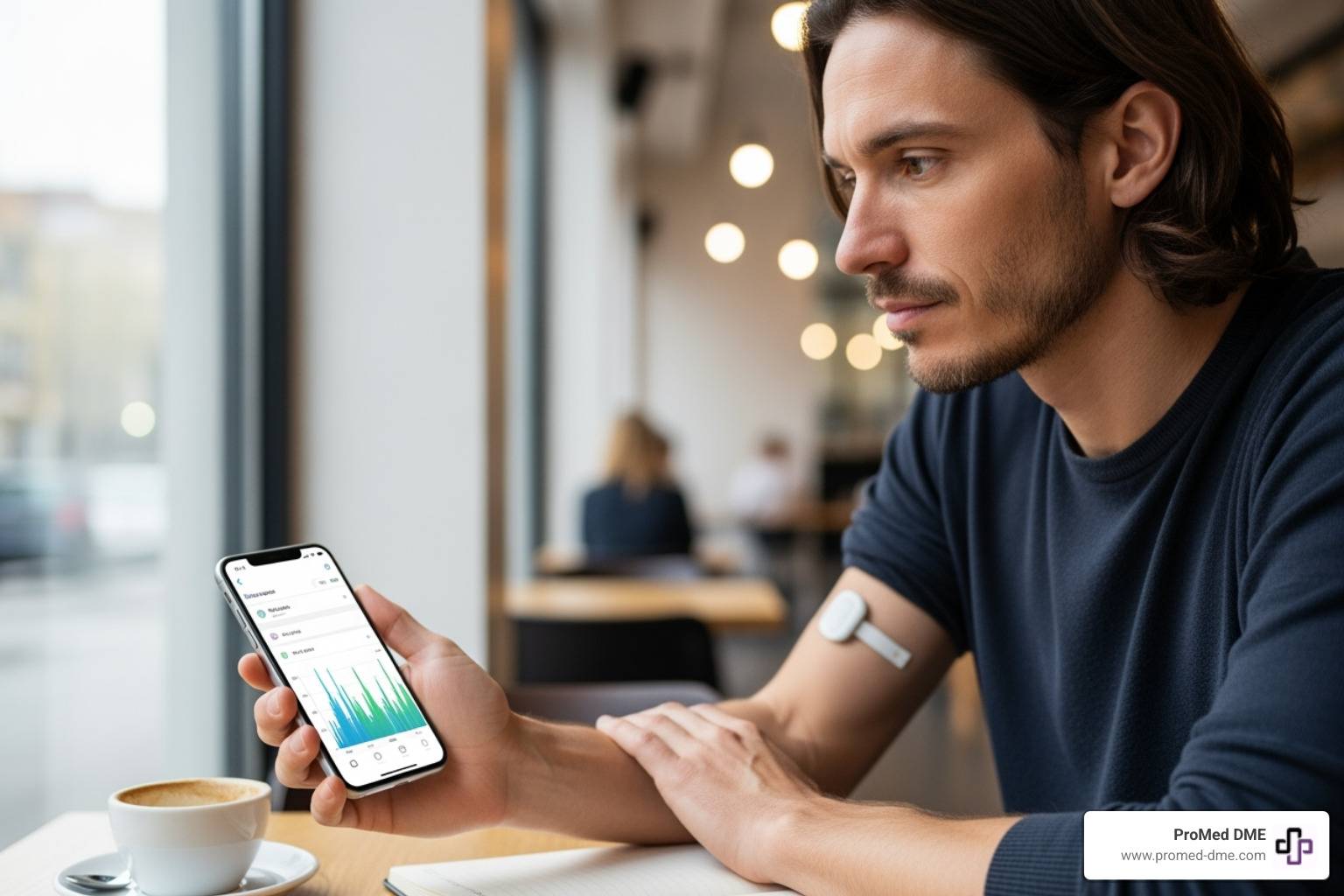
How much does a CGM typically cost?
This is a common and important question. Without insurance, CGM systems and their ongoing supplies can range from around $160 to $500 per month. The cost depends on the specific device and whether it requires separate components.
The most frequent expense will be the sensors, which need regular replacement. Some systems also require a separate transmitter that lasts about 90 days, adding to the annual cost. While many people use their smartphones, a dedicated receiver device is another potential upfront cost. Some manufacturers also offer subscription models, which can be convenient.
The good news is that insurance significantly lightens this financial load. The most cost-effective way to get your CGM is usually by having a prescription and securing CGM coverage through your health benefits. This helps minimize upfront out-of-pocket expenses. Even with coverage, you might still have co-pays, deductibles, or annual maximums.
For specific pricing and to help you understand your options, please refer to our detailed CGM cash price information.
Are there CGMs available for people without diabetes?
Yes, absolutely. While CGMs were created for diabetes management, their use has expanded. There is a growing trend of people without diabetes using CGMs for metabolic health monitoring. Health-conscious individuals and athletes use them to understand how food, exercise, and lifestyle choices impact their glucose responses. This can provide incredible insights into preventing prediabetes or simply feeling your best.
Some CGM systems are now available over-the-counter or as prescription-free devices for people without a diabetes diagnosis. These are designed for individuals who aren't on insulin but want to understand how their habits affect their glucose levels.
However, most insurance companies still require a prescription and a diabetes diagnosis for reimbursement. So, if you're looking into CGM for general wellness, be prepared to pay for it out-of-pocket.
How accurate are CGMs, really?
CGMs are very accurate, but it's helpful to understand how they work. We measure CGM accuracy using MARD (Mean Absolute Relative Difference). Most modern CGMs have MARD values in the single digits, often within 9-10% of lab-measured glucose, which means they're very reliable.
However, keep a few points in mind:
- Lag Time: CGMs measure glucose in the interstitial fluid (the fluid around your cells), not directly in your blood. This means there's a small, natural lag time (usually 5 to 20 minutes) between what's happening in your blood and what the CGM shows. If your glucose is changing quickly, your CGM reading might be a bit behind.
- Compression Lows: Pressure on your sensor (like sleeping on it) can cause a false low reading, sometimes called a "compression low." Being mindful of sensor placement can help avoid this.
- When to Use a Fingerstick: While CGMs drastically reduce the need for fingersticks, they don't eliminate them. You should still do a fingerstick if your symptoms don't match your CGM readings or before taking insulin if you're unsure. It's always a good idea to confirm with a finger-prick device if you're experiencing extreme high or low blood sugar symptoms.
Despite these nuances, CGMs provide a continuous stream of insight that traditional meters can't match, painting a clearer picture of your glucose trends and empowering you to make smarter choices.
Your Journey to Smarter Diabetes Management Starts Here
We hope this guide has made getting a CGM feel much more achievable. Each step is designed to make your life with diabetes easier and healthier. You now have the knowledge to understand CGM benefits and the practical steps to get one.
Your path to smarter diabetes management begins here. It's about taking charge, feeling empowered, and embracing technology that can genuinely improve your life. Imagine: no more guessing games or constant finger pricks—just clear, continuous information to help you make the best decisions for your health.
When it comes to getting your CGM supplies, we're here to be your trusted partner. At ProMed DME, we're dedicated to making the process as smooth as possible. We handle the paperwork and insurance checks. We also ensure your supplies arrive at your door with free shipping, and you get ongoing support from our dedicated nurse. We are with you every step of the way. We believe everyone deserves easy access to the best tools for managing diabetes, without the stress!
Ready to take the next step? Visit our website to find more and get started today.
Recursos y artículos relacionados
Manténgase informado con las entradas de nuestro blog informativo.
Descubra las ventajas de ProMed
y pruebe nuestros productos
Ofrecemos envío gratuito y un legendario servicio de atención al cliente para garantizar que reciba los
mejores productos de DME para sus necesidades.

